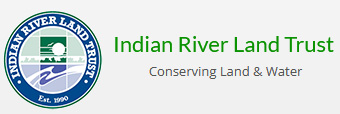Protecting Lands
Land Protection Tools
The Indian River Land Trust protects and preserves conservation land through two primary means - fee simple acquisition (outright purchase) and conservation easements (removal of development rights). Below is a simple explanation of each.
Fee Simple Acquisition - The Indian River Land Trust considers acquisition an important process to preserve important conservation lands to protect and improve our ecosystems, wildlife habitat, wetlands, hammocks, and coastal areas. The Indian River Land Trust acquires land through gift (donation) or purchase, often at a reduced sale price and usually with the aid of government grants or a special fundraising campaign. Land that IRLT acquires is managed in perpetuity as wildlife habitat and often for public use and enjoyment.
Conservation Easements - The Indian River Land Trust accepts conservation easements on land. As a legal tool, a conservation easement allows landowners to retain ownership and management responsibilities for their land, but requires that they (and all future owners) observe certain agreed upon prohibitions and limitations on development and use of the land in order to protect its conservation values. Landowners may sell or lease the land, but the easement placed on the property remains with the land forever. As holder of a conservation easement, the Indian River Land Trust is responsible for monitoring and enforcing the terms of the easement in perpetuity. The donation of an easement may result in a charitable deduction for federal income and other tax purposes.
